This article was co-authored by Laura Marusinec, MD. Dr. Marusinec is a board certified Pediatrician at the Children's Hospital of Wisconsin, where she is on the Clinical Practice Council. She received her M.D. from the Medical College of Wisconsin School of Medicine in 1995 and completed her residency at the Medical College of Wisconsin in Pediatrics in 1998. She is a member of the American Medical Writers Association and the Society for Pediatric Urgent Care.
There are 35 references cited in this article, which can be found at the bottom of the page.
wikiHow marks an article as reader-approved once it receives enough positive feedback. In this case, 96% of readers who voted found the article helpful, earning it our reader-approved status.
This article has been viewed 721,234 times.
Eczema is a skin condition caused by a deficiency of oils and moisture in the skin. Healthy skin maintains its balance of these components, creating an effective barrier to environmental damage, irritation, and infection. Scalp eczema can be caused by either seborrheic or atopic (inherited) dermatitis. It is also known as dandruff, seborrheic dermatitis, seborrheic psoriasis, and (in infants) “cradle cap.”[1] These types of dermatitis may also cause eczema on the face, chest, back, under the arms, and in the groin region.[2] While they can cause discomfort and embarrassment, these types of dermatitis aren’t contagious, and they aren’t caused by poor hygiene. If you understand the causes and symptoms of scalp eczema, you may be able to treat or heal your scalp.
Steps
Recognizing the Symptoms and Causes
-
1Look for common symptoms. Scalp eczema can cause problems for your scalp or any affected areas of your skin. Common symptoms include flaky skin (dandruff), itching, red skin, scaliness or crusting of the skin, greasy patches, and hair loss.[3]
- Inflammation leads to red patches and high fatty acid content, which can make the skin greasy and yellow in some people.[4]
- In infants, it is common in the scalp and can present as red, dry scaly plaques, or in more severe cases as thick white or greasy yellow scales.
- Other skin diseases such as fungal infection, psoriasis, dermatitis, and lupus may resemble scalp eczema. However, these differ based on the location and layers of the skin involved.[5]
- If you aren’t sure whether your symptoms match those of scalp eczema, see your doctor. S/he can help you determine the cause of your symptoms and whether they are severe enough to require treatment.
-
2Know the causes of eczema. In addition to decreased oils and moisture present, doctors believe that a certain kind of yeast, Malassezia furfur, has a role in causing seborrheic eczema. Malassezia yeast is usually present on the outer surface of the skin. In those with scalp eczema, this yeast invades the superficial layers of skin and secretes substances that increase fatty acid production. This leads to inflammation and enhances production and dryness of skin, which causes the skin to flake.[6]
- If your eczema is atopic, meaning that your family has a tendency to develop eczema, yeast may not be the culprit. Doctors believe that many people with atopic eczema have a faulty skin barrier due to a changed gene within the skin’s structural proteins.[7]
Advertisement -
3Determine your risk factors. While doctors are not certain why some people develop seborrheic eczema, and others don’t, there do appear to be some factors that increase your risk, including:[8]
- Being overweight or obese
- Fatigue
- Environmental factors (such as dry weather)
- Stress
- Other skin issues (such as acne)
- Certain medical conditions, including stroke, HIV, Parkinson’s disease, or head injury
-
4Avoid hair and skin care products that contain alcohol. Alcohol removes protective oils from the skin surface, causing the scalp to dry out. This can make the flaking and itching worse and may be a contributing cause of seborrheic eczema.[9]
- Be gentle with washing your skin and scalp. Do not scrub! Gently massage your skin with your fingers when washing your hair. The goal is to clean your hair without stripping the oils from your scalp.
-
5Do not scratch itchy patches of your scalp or surrounding skin. Though it can be difficult to avoid scratching when a part of your body feels dry and itchy, you should try not to scratch the affected areas of your scalp because the skin can become irritated and bleed.
- You could even cause a secondary infection if you scratch excessively.
-
6Expect eczema to return. It is unlikely that you will be able to completely “cure” your disease with an effective treatment. Scalp eczema appears and then disappears when it is treated. However, it usually comes back and will require continuous treatment. Luckily, many of the treatments can be continued for long periods.[10]
Treating Scalp Eczema with Over-the-Counter Treatments (Adults)
-
1Talk with your doctor or pharmacist first. Even over-the-counter (OTC) treatments may interfere with certain health and medical conditions, so it’s a good idea to consult with your doctor or a pharmacist before using them.[11]
- If you have allergies, medical conditions, take medications, or are pregnant or breastfeeding, always consult your doctor before starting any treatment process.
- Do not use treatments on children without consulting a pediatrician first. Treating scalp eczema in children is a different process and is covered in its section of this article.
-
2Use over the counter treatment. There are various over-the-counter shampoos and oils to treat scalp eczema. Over-the-counter treatments are natural first-line treatments that are used before seeking out prescribed shampoos. You can also use them daily over an extended period.[12]
- These OTC shampoos are not approved for use on children! Use them only on adult scalp eczema.
-
3Wash your hair properly. Regardless of the kind of shampoo you use, there are some general instructions you can use to wash your hair with any of the shampoos or oils. Scrubbing your scalp too vigorously or using shampoos that contain alcohol can make your scalp eczema worse.
- First, rinse your hair with warm (not hot) water.
- Apply the treatment shampoo thoroughly on your scalp and hair, massaging it gently into your scalp. Do not scrub or scratch your scalp. This could cause the scales to bleed or even become infected.
- Leave the medication on for the amount of time recommended on the package. Typically, you need to keep it on for at least 5 minutes.
- Rinse your hair thoroughly with warm (not hot) water and dry with a clean towel.
- Coal tar shampoo can be harmful if swallowed. Avoid getting it into your eyes or mouth.
- Some treatments, such as ketoconazole shampoo, may be more effective when you alternate them with a different scalp product twice a week.[13]
-
4Wash your hair with selenium sulfide shampoo. This shampoo kills the yeast that is potentially responsible for many cases of scalp eczema. If you kill the yeast, your skin will have a chance to heal without increased dryness, inflammation, or itchy scales.[14]
- Common side effects include dryness or oiliness of the hair or scalp. Less common side effects can include hair discoloration, hair loss, and irritation.[15]
- You must use this treatment at least two times a week for it to be effective.
-
5Apply a tea tree oil product to your hair. Tea tree oil (Melaleuca alternifolia) has natural antifungal properties that may help treat scalp eczema. One clinical study demonstrated some improvement when using shampoo with a 5% concentration of tea tree oil.[16] The only common side effect is scalp irritation.[17]
- This product can be used daily.
- Do not consume tea tree oil, as it is toxic. Avoid getting it in your eyes or mouth.
- Tea tree oil has estrogenic and anti-androgenic properties that have been linked to conditions such as breast growth in prepubescent males.[18]
-
6Massage your scalp with egg oil. Egg Oil (Ovum Oil) has natural immunoglobulins that help treat scalp eczema on regular use.
- This product must be used twice a week, leaving on overnight for at least a year.
- Egg oil is rich in Omega-3 fatty acid Docosahexanoic Acid which promotes new epithelial cell growth.
-
7Use a pyridine zinc shampoo. Most anti-dandruff shampoos use pyrithione zinc as their active ingredient. Scientists do not know exactly why it is helpful to treat scalp eczema, although it may have antifungal and anti-bacterial properties.[19] It also helps slow the production of skin cells, which helps reduce flaky skin. The only known side effect is scalp irritation.
-
8Try salicylic acid shampoo. This shampoo has exfoliation qualities and helps heal the peeling upper layers of skin on your scalp. It is effective in shampoo at concentrations of 1.8 to 3%. The only side effect is skin irritation.[22]
-
9Try a ketoconazole preparation. Ketoconazole is very effective in treating scalp eczema. It is available in several OTC preparations, including shampoos, foams, creams, and gels. It is also available in prescription treatments.[23]
- Over-the-counter preparations are lower in strength than prescription shampoos or creams.[24]
- Side effects may include unusual hair texture, discoloration, scalp irritation, or oiliness or dryness of the scalp or hair.[25]
- 1% to 2% ketoconazole shampoo is effective and safe, including in infants. It can be used twice daily for two weeks.[26]
-
10Apply raw honey to your hair. Although it is not a shampoo, raw honey has antibacterial and antifungal properties.[27] It can be used to alleviate itching and loose skin flakes. It is not a cure for scalp eczema, although it may help heal scalp skin lesions.[28]
- Dilute raw honey in warm water, using 90% honey and 10% water.[29]
- Rub crude or raw honey into the scalp lesions for 2 to 3 minutes. Do not scrub or rub harshly. Rinse with warm water.
- Every other day, rub the honey onto the itchy areas of your scalp and leave it on for 3 hours. Rinse your scalp after the 3 hours are up. Continue this regimen for 4 weeks.[30]
-
11Try a coal tar shampoo. This shampoo helps by decreasing the rate at which skin cells are produced on your scalp. It also decreases fungus growth and loosens and softens the scales and crust on your scalp. However, it is not as safe to use as other OTC treatments, so it’s a good idea to try other options first.[31]
- Use this shampoo twice daily for up to four weeks.
- Possible side effects include itching of the scalp, localized hair loss, contact dermatitis in the fingers, and altered pigmentation in the skin.[32]
- You should consult your doctor before using a coal tar shampoo. It should not be used with children or with pregnant or breastfeeding women. It may also cause harmful interactions with certain medications or cause allergic reactions.[33]
Treating Scalp Eczema in Infants and Children
-
1Wait for it to clear on its own. In many infants and young children, scalp eczema will clear up on its own within a few weeks. It could take a few months to clear in some cases. Although it may look uncomfortable, most children are not bothered by the condition.[34]
- If the condition does not clear up, consult with your pediatrician to discuss treatment options.
- Like adult scalp eczema, the condition may clear up after treatment and reappear later.
-
2Use different treatments for children. The treatments for infants and children younger than two years old differ from treatments for adults. Do not use even OTC treatments meant for adults on children under the age of 2.[35]
-
3Remove scales by massaging your child’s scalp. Most of the time, the scales that form on your child’s scalp can be removed with a gentle massage. Use your fingers or a soft washcloth. Wet the child’s hair with warm water and gently rub the scalp. Do not scrub the skin![36]
- Avoid using sharp or exfoliating cleaning tools, such as scrubbers, loofahs, or harsh sponges on your child’s skin.
-
4Use a mild baby shampoo. Shampoos meant for adult eczema can be too harsh for your child’s delicate skin. Use a regular mild baby shampoo, such as Johnson & Johnson’s or Aveeno Baby.[37]
- Wash your child’s hair daily.
- 1% to 2% ketoconazole shampoo is effective and safe for infants, although you should always talk with your pediatrician before starting treatment. It can be used twice daily for two weeks.[38]
-
5Rub oil on the scalp. If massage does not remove the scales, you can rub petroleum jelly or mineral oil on the areas of scaly skin.[39] Avoid using olive oil.[40]
- Allow the oil to sink into the skin for a few minutes. Then shampoo with a gentle baby shampoo, rinse thoroughly with warm water and brush the child’s hair as usual.
- Make sure to rinse thoroughly your child’s scalp after each oil treatment. Otherwise, the oil may build up and cause the condition to worsen.
-
6Bathe your child daily. Give your child a warm (not hot) bath every 2-3 days.[41] Don’t bathe the child for more than 10 minutes.
- Avoid irritants such as harsh soaps, bubble bath, Epsom salts, or other bath additives. These can irritate your child’s skin and make eczema worse.
Treating Scalp Eczema with Prescriptions
-
1Talk to your doctor about a prescription treatment. Patients who do not respond to over-the-counter treatments or who are unhappy with the results may need prescription medication. Doctors can prescribe stronger treatment regimens including creams, lotions, shampoos, and even oral medication if OTC shampoos are ineffective.[42] UV light treatments may also be an option.[43]
- Prescribed antifungal shampoos and topical corticosteroids are beneficial, but can be expensive and may have adverse side effects with long-term use. These and other prescribed shampoos are only used when over-the-counter treatments are not effective.
-
2Use shampoos with antifungals. The most common type of prescription shampoo used for scalp eczema is antifungal shampoo. Most antifungal shampoos have a concentration of 1% ciclopirox and 2% ketoconazole.[44]
- The most common side effects of these shampoos include irritation, burning sensations, dry skin, and itching.
- These shampoos are used daily or at least twice weekly during the prescribed period. Always follow the directions on the package or prescription.
-
3Try shampoos with corticosteroids. These shampoos help reduce inflammation and decrease itching and flaking of the scalp. The common corticosteroids shampoos include ingredients such as 1.0% hydrocortisone, 0.1% betamethasone, 0.1% clobetasol, and 0.01% fluocinolone.[45]
- Side effects usually occur after long-term use and may include thinning of the skin, itching, a stinging sensation, and skin hypopigmentation (the loss of the color pigments of your skin, which results in lightening of the skin). Most people who use these shampoos for only a short period should not experience negative side effects.
- These prescription shampoos contain steroids, and a little of the medication can be absorbed into the bloodstream. If you have diabetes or sensitivity to steroids, you should be sure to discuss these complications with your doctor.
- Be aware that corticosteroid shampoos tend to be more expensive than other treatments.
- These shampoos can be used daily or twice daily during the prescribed period.
- The use of antifungal and corticosteroid shampoos at the same time may be safe and yield better results. Talk to your doctor about combining the two.[46]
-
4Take other prescription treatments. For scalp eczema, shampoos are the most commonly chosen form of treatment. You can also try creams, lotions, oils, or foams that contain one or more of the above medicinal ingredients.[47]
- Prescription antifungal agents called azoles are a highly effective treatment for scalp eczema.[48] Ketoconazole is the most commonly prescribed agent and has been proven effective in many clinical trials.
- Another common prescription treatment uses Ciclopirox, a type of hydroxy pyridine antifungal. It is available as a cream, gel, or solution.
- Corticosteroids may also be prescribed as a cream or topical ointment.
-
5Try light therapy. Light therapy, or phototherapy, can sometimes help cases of scalp eczema. It is commonly combined with medication such as a psoralen.[49]
- Because Light therapy involves exposure to ultraviolet light, it carries an increased risk of skin cancer developing.[50]
- This type of treatment is usually reserved for people whose scalp eczema is caused by atopic dermatitis, or whose seborrheic dermatitis is extensive. It cannot be used on infants or young children.[51]
-
6Talk with your doctor about other treatment options. There are a few other ways of treating scalp eczema, but they are reserved as last-resort treatments as they can cause serious side effects. However, if no other treatments have worked, you may want to consult with your doctor about other treatment options.[52]
- Creams or lotions containing tacrolimus (Protopic) and pimecrolimus (Elidel) may be effective for treating scalp eczema. However, they carry an increased risk of cancer and are more expensive than corticosteroids.
- Terbinafine (Lamisil) and butenafine (Mentax) are oral antifungal treatments for scalp eczema. They can interfere with specific enzymes in the body or cause allergic reactions or liver problems. This limits their use for the treatment of scalp eczema.[53]
Warnings
- This information is not designed to be a substitute for professional medical advice, diagnosis, or treatment. Always consult with your doctor before starting any treatment, including over-the-counter treatments.⧼thumbs_response⧽
References
- ↑ https://my.clevelandclinic.org/health/diseases/14403-seborrheic-dermatitis
- ↑ https://eczema.org/information-and-advice/types-of-eczema/seborrhoeic-dermatitis-in-adults/
- ↑ https://eczema.org/information-and-advice/types-of-eczema/scalp-eczema/
- ↑ Clark GW, Pope SM, Jabari KA. Diagnosis and Treatment of Seborrheic Keratosis. Am Fam Physician. 91(3), 2015:185-190.
- ↑ Clark GW, Pope SM, Jabari KA. Diagnosis and Treatment of Seborrheic Keratosis. Am Fam Physician. 91(3), 2015:185-190.
- ↑ https://my.clevelandclinic.org/health/diseases/14403-seborrheic-dermatitis#symptoms-and-causes
- ↑ http://www.eczema.org/atopic
- ↑ https://my.clevelandclinic.org/health/diseases/14403-seborrheic-dermatitis#symptoms-and-causes
- ↑ https://familydoctor.org/condition/seborrheic-dermatitis/
- ↑ Alavian CN, McEnery-Stonelake M. Keratosis, Seborrheic. The 5-Minute Clinical Consult Standard 2015. Philadelphia: Wolters Kluwer Health, 2015, 3572–3580.
- ↑ https://familydoctor.org/condition/seborrheic-dermatitis/
- ↑ https://medlineplus.gov/ency/article/000963.htm
- ↑ https://my.clevelandclinic.org/health/drugs/20386-ketoconazole-shampoo
- ↑ https://www.aafp.org/afp/2000/0501/p2703.html
- ↑ http://www.drugs.com/sfx/selenium-sulfide-topical-side-effects.html
- ↑ Satchell AC, Saurajen A, Bell C, Barnetson RS. Treatment of dandruff with 5% tea tree oil shampoo. J Am Acad Dermatol. 2002;47(6):852–855.
- ↑ http://www.ncbi.nlm.nih.gov/pmc/articles/PMC2888552/#b33-ptj35_6p348
- ↑ Henley DV, Lipson N, Korach KS, Bloch CA. Prepubertal gynecomastia linked to lavender and tea tree oils. N Engl J Med.2007;356(5):479–485
- ↑ http://www.ncbi.nlm.nih.gov/pmc/articles/PMC2888552/#b29-ptj35_6p348
- ↑ http://www.ncbi.nlm.nih.gov/pmc/articles/PMC2888552/#b29-ptj35_6p348
- ↑ http://www.drugs.com/cdi/pyrithione-zinc-shampoo.html
- ↑ https://www.aafp.org/afp/2000/0501/p2703.html
- ↑ http://www.ncbi.nlm.nih.gov/pmc/articles/PMC2888552/#b29-ptj35_6p348
- ↑ http://www.nlm.nih.gov/medlineplus/druginfo/meds/a605014.html
- ↑ https://medlineplus.gov/druginfo/meds/a605014.html#side-effects
- ↑ Peter RU, Richard-Barthauer U. Successful treatment and prophylaxis of scalp seborrhoeic dermatitis and dandruff with 2% ketoconazole shampoo: results of a multicentre, double-blind, placebo-controlled trial. Br J Dermatol. 1995;132(3):441-445.
- ↑ http://www.ncbi.nlm.nih.gov/pubmed/11485891
- ↑ Al-Waili NS. Therapeutic and prophylactic effects of crude honey on chronic seborrheic dermatitis and dandruff. Eur J Med Res. 2001;6(7):306-308.
- ↑ http://www.ncbi.nlm.nih.gov/pubmed/11485891
- ↑ http://www.ncbi.nlm.nih.gov/pubmed/11485891
- ↑ http://www.ncbi.nlm.nih.gov/pmc/articles/PMC2888552/#b29-ptj35_6p348
- ↑ http://www.ncbi.nlm.nih.gov/pmc/articles/PMC2888552/#b29-ptj35_6p348
- ↑ https://www.drugs.com/cdi/coal-tar-shampoo.html
- ↑ http://kidshealth.org/parent/infections/skin/cradle_cap.html
- ↑ Clark GW, Pope SM, Jabari KA. Diagnosis and Treatment of Seborrheic Keratosis. Am Fam Physician. 91(3), 2015:185-190.
- ↑ https://my.clevelandclinic.org/health/diseases/15786-cradle-cap-seborrheic-dermatitis-in-infants
- ↑ https://www.nhs.uk/conditions/cradle-cap/
- ↑ Peter RU, Richard-Barthauer U. Successful treatment and prophylaxis of scalp seborrhoeic dermatitis and dandruff with 2% ketoconazole shampoo: results of a multicentre, double-blind, placebo-controlled trial. Br J Dermatol. 1995;132(3):441-445.
- ↑ https://www.betterhealth.vic.gov.au/health/healthyliving/cradle-cap
- ↑ https://www.nhs.uk/conditions/cradle-cap/
- ↑ https://my.clevelandclinic.org/health/diseases/15786-cradle-cap-seborrheic-dermatitis-in-infants
- ↑ Schwartz JR, Rocchetta H, Asawanonda P, Luo F, Thomas JH. Does tachyphylaxis occur in the long-term management of scalp seborrheic dermatitis with pyridine zinc-based treatments? Int J Dermatol 48(1), 2009:79-85.
- ↑ https://dermnetnz.org/topics/seborrhoeic-dermatitis
- ↑ https://dermnetnz.org/topics/seborrhoeic-dermatitis
- ↑ http://www.ncbi.nlm.nih.gov/pmc/articles/PMC2888552/#b29-ptj35_6p348
- ↑ Ortonne JP, Nikkels AF, Reich K, et al. Efficacious and safe management of moderate to severe scalp seborrhoeic dermatitis using clobetasol propionate shampoo 0.05% combined with ketoconazole shampoo 2%: a randomized, controlled study. Br J Dermatol. 2011;165(1):171-176.
- ↑ https://dermnetnz.org/topics/seborrhoeic-dermatitis
- ↑ https://medlineplus.gov/druginfo/meds/a605014.html
- ↑ https://dermnetnz.org/topics/seborrhoeic-dermatitis
- ↑ Lee E, Koo J, Berger T. UVB phototherapy and skin cancer risk: A review of the literature. Int J Dermatol. 2005;44(5):355–360.
- ↑ https://eczema.org/information-and-advice/treatments-for-eczema/phototherapy/
- ↑ https://www.aafp.org/afp/2015/0201/p185.html
- ↑ Berk T, Scheinfeld, N. Seborrheic Dermatitis. P T. 2010;35(6):348-352.
About This Article
To heal scalp eczema, gently rub some honey onto the itchy areas of your scalp. Then, leave it on for 3 hours before rinsing it out in the shower, repeating every other day. You can also try mixing tea tree oil in with the shampoo you use to wash your hair since tea tree oil has natural antifungal properties. If home remedies aren't cutting it, try an over-the-counter shampoo or oil designed specifically for treating eczema. To learn how to treat scalp eczema in infants and children, scroll down!
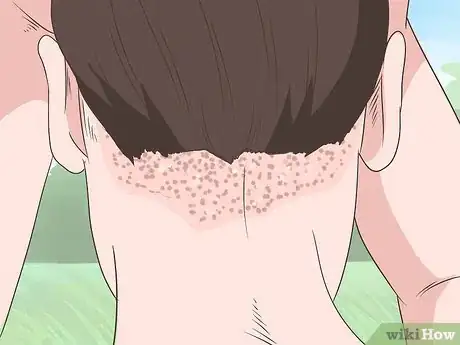
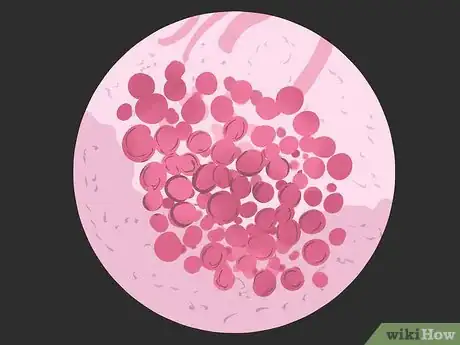
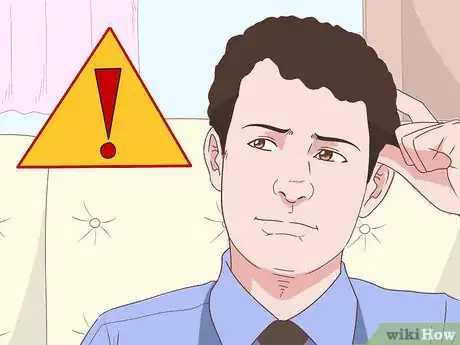

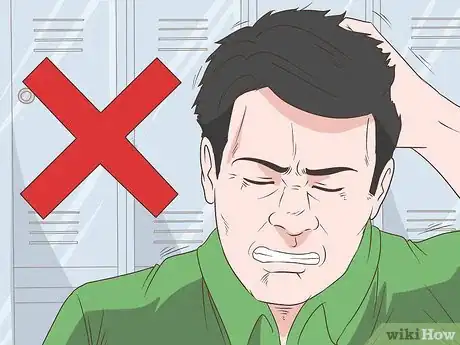
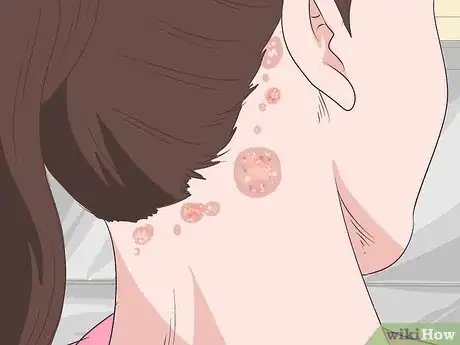

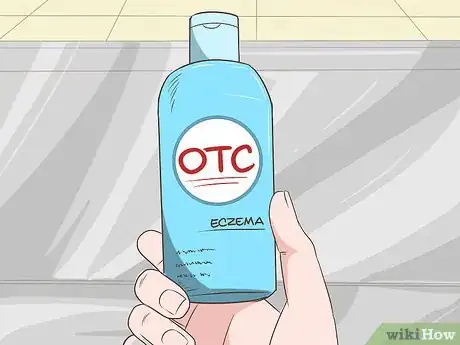
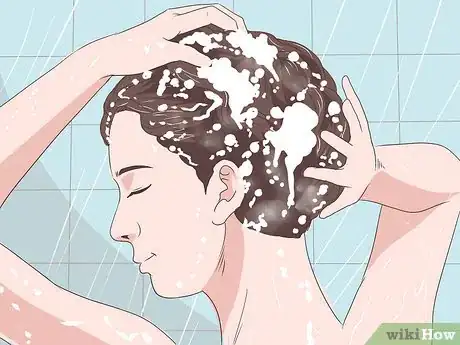

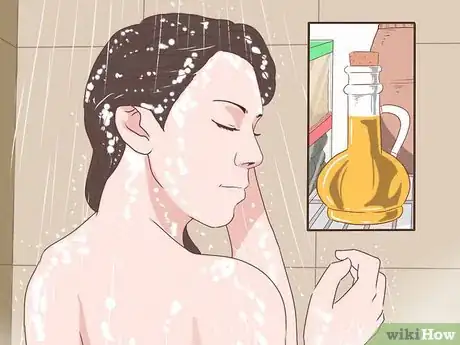
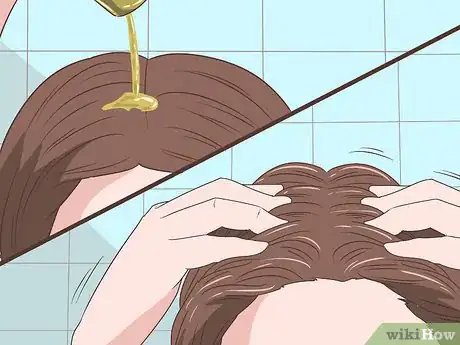
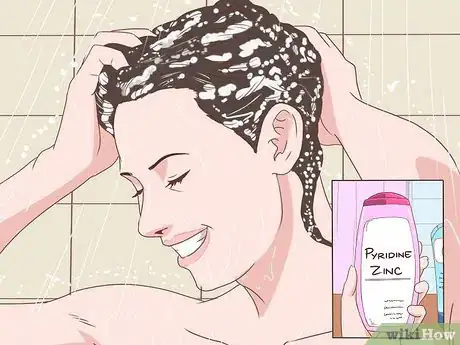

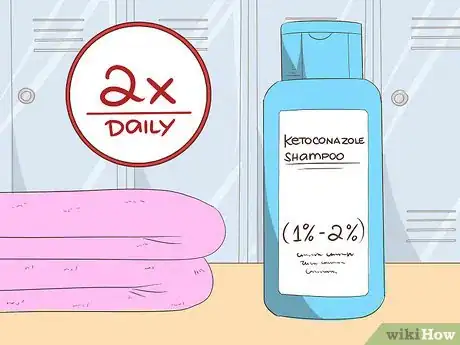
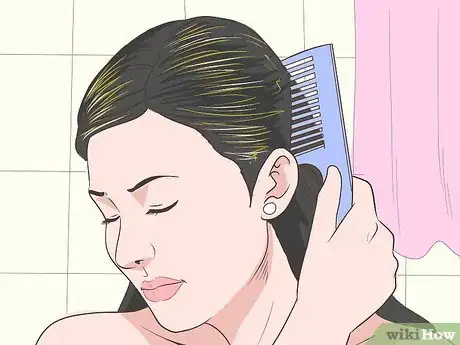
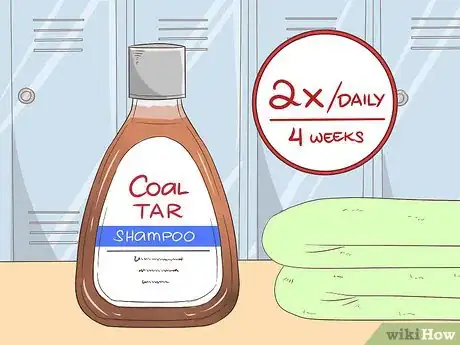
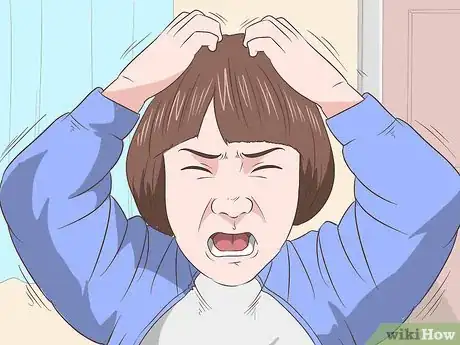
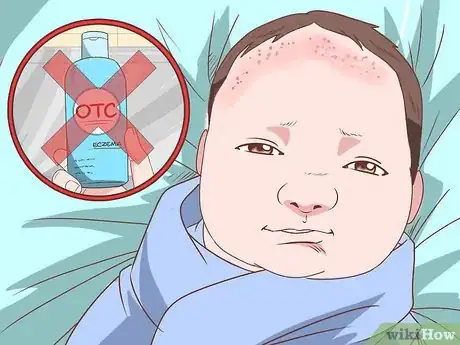
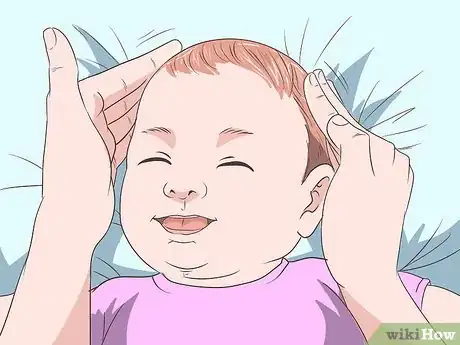
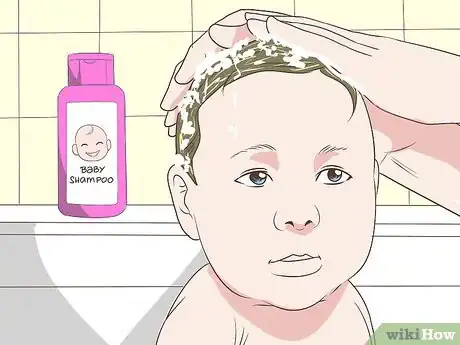
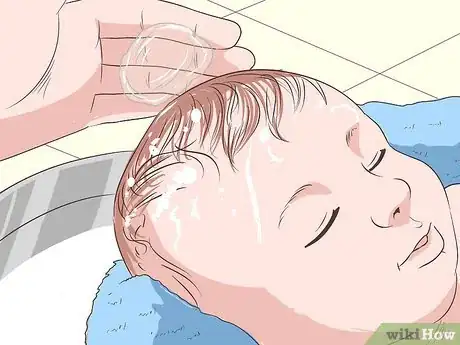
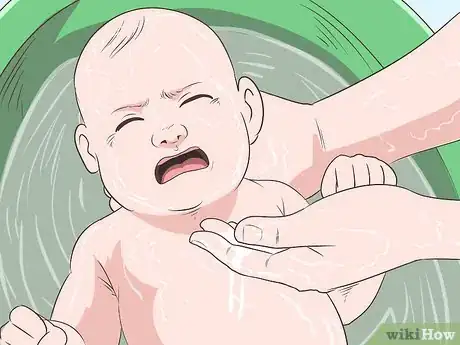

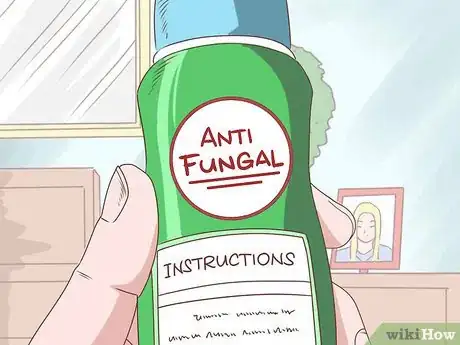


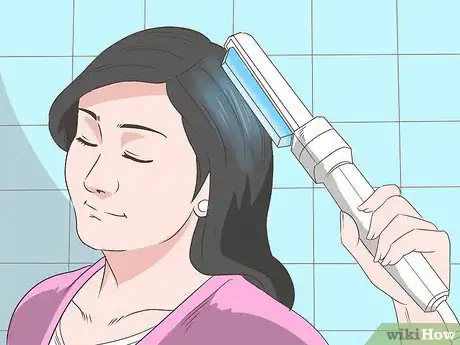
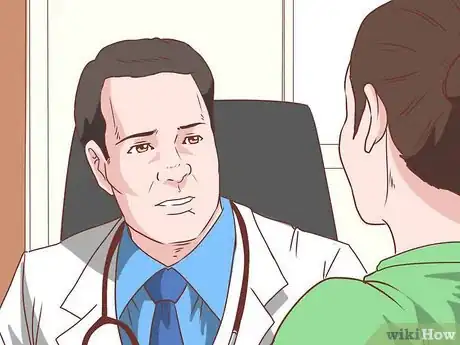
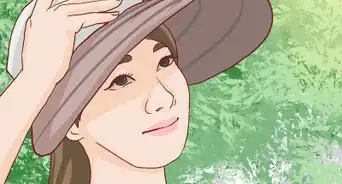

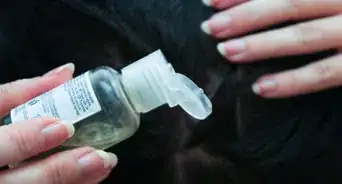
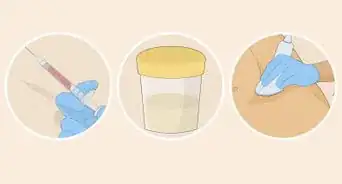
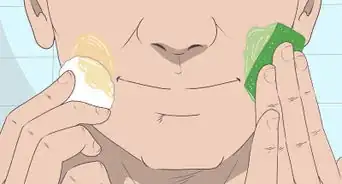








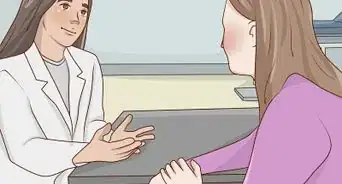













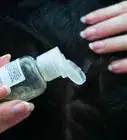
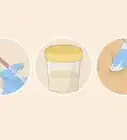



































Medical Disclaimer
The content of this article is not intended to be a substitute for professional medical advice, examination, diagnosis, or treatment. You should always contact your doctor or other qualified healthcare professional before starting, changing, or stopping any kind of health treatment.
Read More...